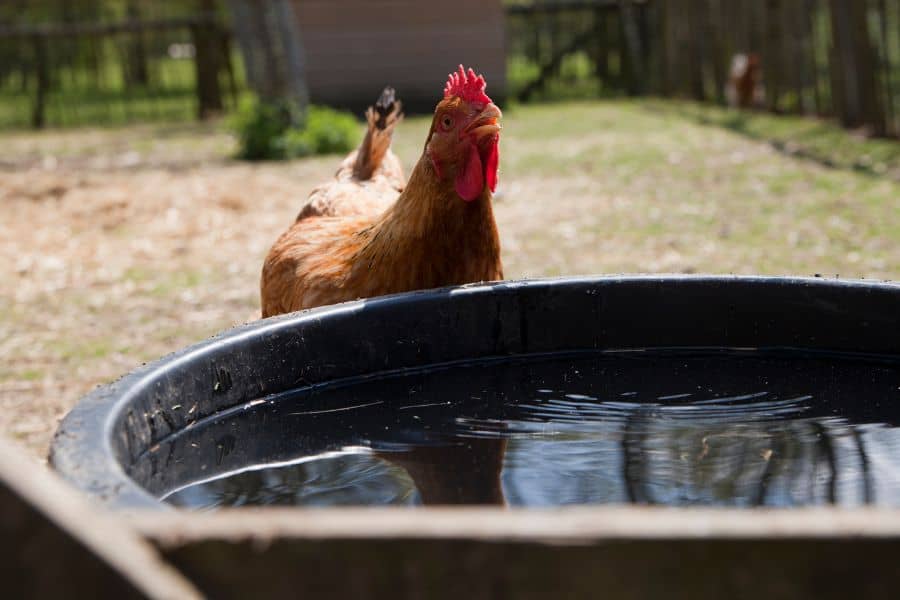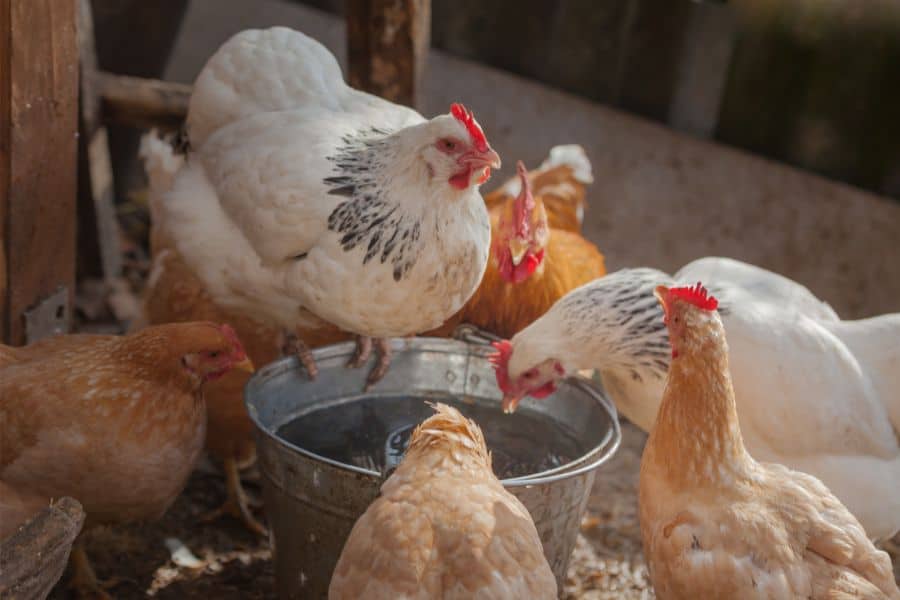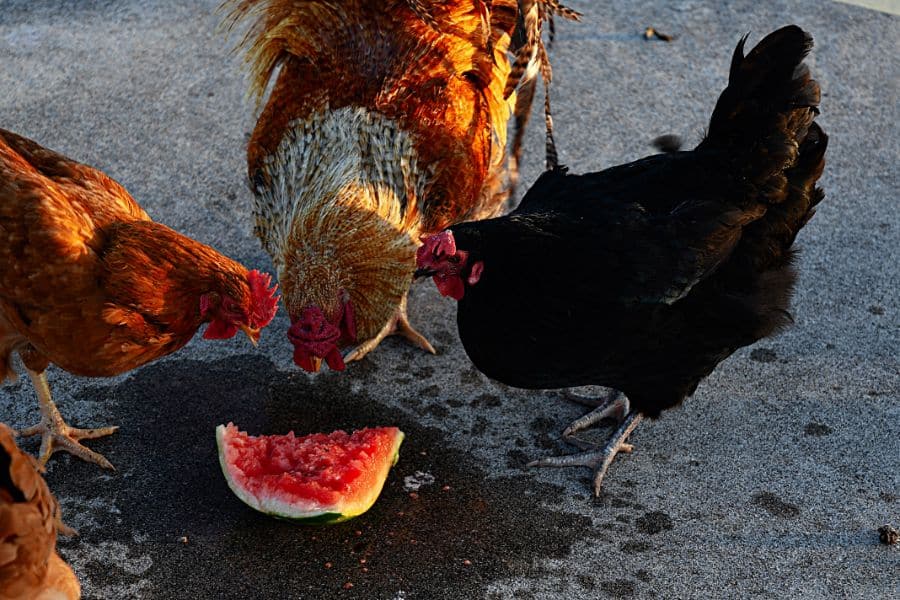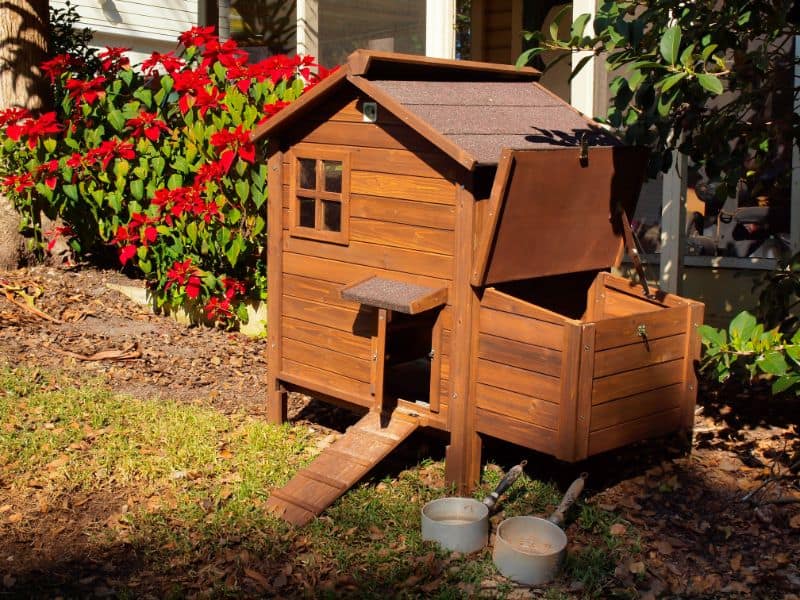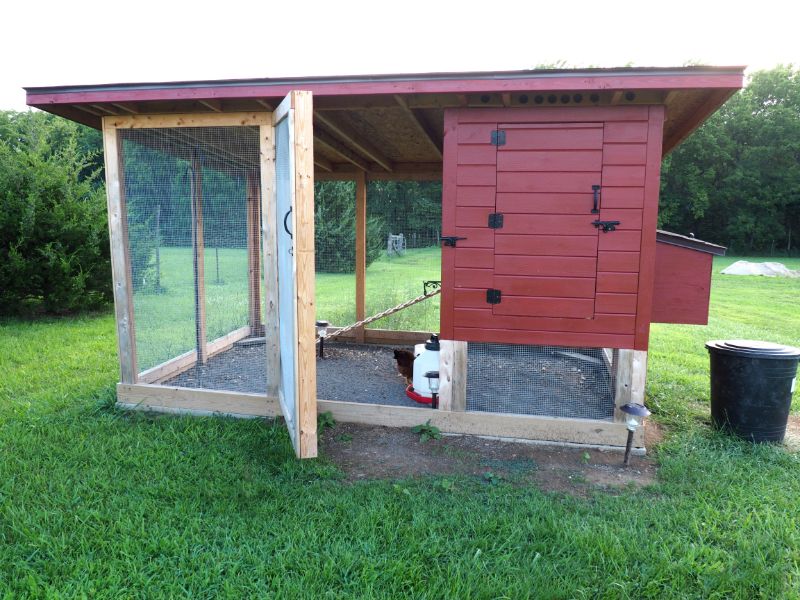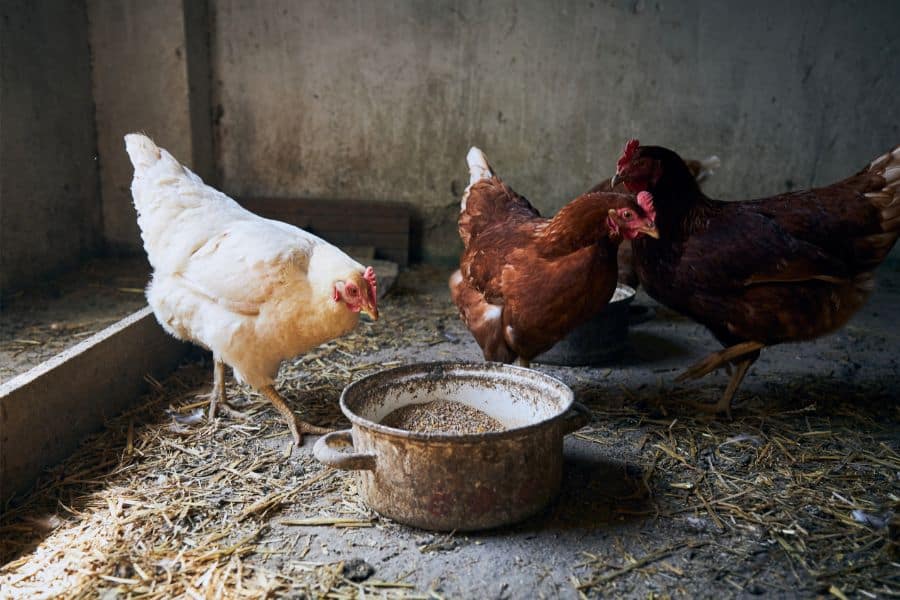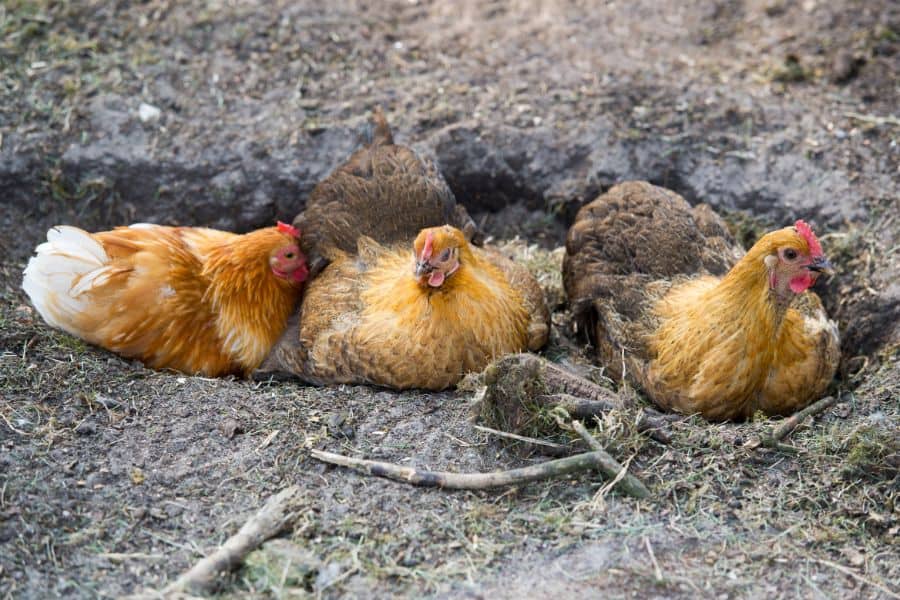Chickens can be very sensitive to hot weather. This is a concern with all the recent heat waves and higher average temperatures around the world.
High temperatures can cause your chickens to become less active, lose their appetite, and produce fewer eggs. In more serious cases, these temperatures can lead to the death of your feathered friends.
Due to the significance of this risk, it’s important for backyard farmers to know when their chickens are hot and how to keep them cool. It’s also important to know what temperatures your chickens can safely tolerate. and indicators that your birds are too hot.
Read on as we explain ten different approaches you can take to keep your birds from getting stressed by the heat.
10 Ways to Keep Your Chickens Cool
1. Hydration
When temperatures get hot, ensuring your chickens have unrestricted access to clean drinking water is very important. Chickens may not have sweat glands, but they still lose a lot of water from their bodies, especially during periods of elevated temperatures.
The water intake of chickens goes up during hot weather so you should be checking and refilling their waterers more often. To ensure that your chickens remain properly hydrated when temperatures rise, take the following steps:
- Add extra waterers so all chickens have easy access to water.
- To keep the water cool, waterers should be kept in shaded spots.
- Add some ice in the waterers to help keep the water cool during the day.
Without enough water, your chickens will become dehydrated resulting in problems such as lethargy, diarrhea, seizures, unresponsiveness, and even death. Keeping the drinking water cool is a good idea because chickens may not drink water that’s too warm.
2. Shade
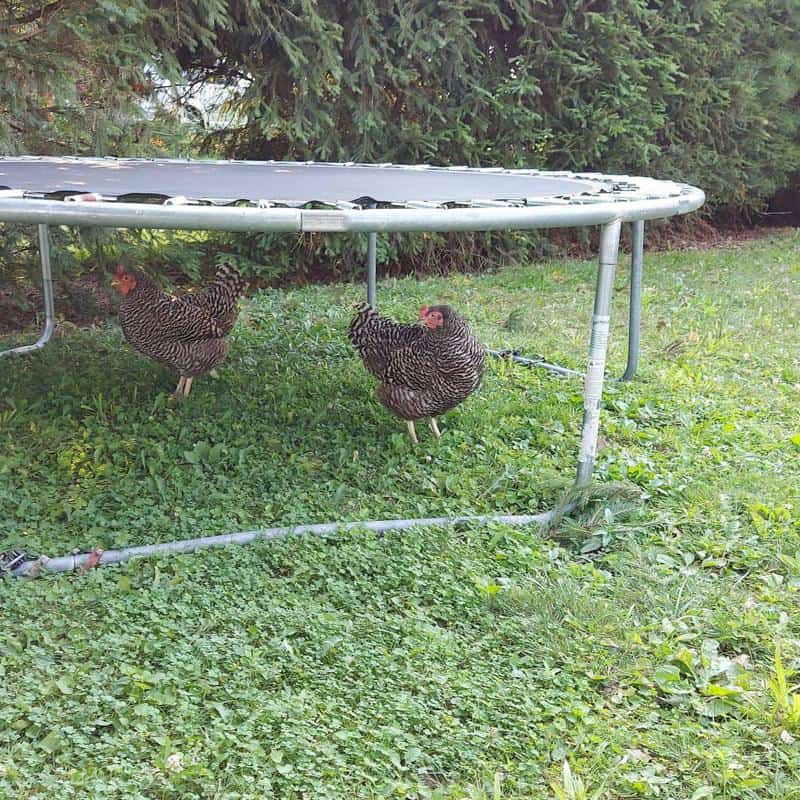
Providing your chickens with plenty of shade is almost as important as keeping them hydrated. No amount of hydration will save your chickens if they are out in the blazing summer sun.
The shade you provide for your chickens shouldn’t just keep out direct sunlight, it should also keep the heat from passing through. Trees with very thick foliage or an insulated roof can provide the quality of shade needed by your chickens.
A properly insulated coop will work just as well as will space under their coop or under your house.
3. Ice-Cold Healthy Treats
A popular method used by backyard farmers to keep their chickens cool is feeding them cold treats. However, it is important to ensure you’re feeding them treats that don’t undermine the objective of keeping them cool.
Treats that are high in carbs actually warm your chickens from the inside as they get digested. Treats with a high-moisture content on the other hand are great for keeping your chickens cool.
Great choices for summer treats for your chickens include:
- Watermelon
- Cucumber slices
- Berries
- Veggies
To make these treats even more refreshing, you can chill or freeze them overnight before feeding them to your birds. The fruits and veggies can also be chopped and frozen in ice cubes to make ice pops that you can also give your birds.
Remember that chickens will eat less food when it’s hot outside. As refreshing as treats are, you should still prioritize their healthy feed to avoid malnutrition.
4. Strategic Coop Location
When there are minimal sources of shade, your chickens may choose to take shelter in their coop during hot weather. This makes it important to locate your coop in a spot where it won’t be exposed to too much heat.
A partially shaded location in your backyard is a good spot for your chicken coop. This could be beside the house or a spot that is shaded by trees during the hottest parts of the day.
If a partially shaded location isn’t a viable long-term solution, you can opt for a coop on wheels. You can move the coop to take advantage of different sources of shade during the day while still being able to move the chickens to a warmer location during winter.
5. Proper Coop Ventilation
If your chickens have access to an outdoor shaded area, ventilation may not be a problem. However, if the coop is one of the few places where your chickens can keep cool in the heat, inadequate ventilation can become a serious issue.
During summer, you want drafts moving through your coop, creating a cross-breeze, so open as many windows and vents as possible. You may even want to leave the door open or change to a screen door.
When allowing for good ventilation, remember that any openings should still be predator-proof. Crowded surroundings also interfere with ventilation so ensure your chickens have lots of space inside the coop and inside the run.
If it can be safely done, you can also add a fan to help move air through the coop. Ensure that the electrical cables and any associated attachments are well out of your chickens’ reach.
Also Read: DIY Pallet Chicken Coop Ideas
6. Minimal Bedding
A thick bedding layer inside the coop can trap heat, raising temperatures inside. Therefore, it is recommended that the bedding layer be 2 inches deep or less.
This also means that the deep litter method is not advisable under such conditions. The deep litter method is a coop management technique that allows for chicken litter to safely compost inside the coop.
The process of breaking down the litter produces heat which is great for keeping chickens warm during fall and winter. However, this extra heat will be a problem when the weather is hot.
7. Misters
For less than $20, you can get a mister to help keep your chickens cool. Misters are effective for lowering temperatures because they make use of evaporative cooling.
Misters work by spraying very small droplets of water into the air. In the heat of summer, these small water droplets quickly evaporate but in doing so, they draw some of the heat from the surrounding air.
The effect of this happening constantly is the lowering of the temperature in the immediate surrounding of the mister. This is also how sweating keeps our own bodies cool.
There are different misting systems available ranging from simple hose attachments to complicated systems with multiple nozzles that can keep a large area cool as shown in the video below.
8. Early Mornings and Late Evenings
If the coop is the coolest place for your chickens to be when it’s hot outside, that is exactly where they should be.
This means that you should only let your chickens outside in the early morning and late in the evening when the weather is cooler.
9. Dust Bath
One method of keeping your chickens cool that may surprise you is a dust bath. Chickens take dust baths for several reasons including pest control, but these can also help to keep them cool.
The sand or soil at the top of a dust bath may be warm, but its temperature a few inches below the surface will be cool especially if the dust bath is in a shaded spot.
You may not have to do anything if there are plenty of shaded spots where your chickens like to take dust baths. However, you can also create a dust bath for them in a better location that is customized for even better lice and mite control.
10. Moisten Soil
One last method you can use to help keep your chickens cool is to moisten the soil where your chickens seem to spend the most time when it’s hot.
You can do the same on a concrete or grass surface if this is indeed the coolest spot. However, soil or sand works a lot better.
Don’t go overboard with the water because the chickens will not want to sit in a puddle. The chickens will want soil that they can lie on or even dust bathe in.
There are two approaches you can use to moisten the soil. These are:
- Spraying the water on directly
- Putting ice blocks in a container with holes so that the ice continues to moisten the soil as it melts.
Should You Dip Your Chickens in Water to Cool Them?
When temperatures are hot, it may seem logical to dip your chickens in water as a quick way to keep them cool. You may even see examples of people doing this.
Many experts agree that getting your chickens wet when it’s hot is not a good idea and may even make it harder for your birds to regulate their body temperature.
Chickens fluff their feathers, and this helps to create an insulating layer that protects them from both cold and hot temperatures. The fluffed feathers allow air to flow against the bird’s skin drawing away some of the heat.
Wet feathers don’t fluff as well as dry ones and this can reduce the cooling effect of air on the chicken’s skin. Dipping part of the chickens in water should only be considered when the chickens are displaying signs of severe heat stress.
How Hot Is Too Hot for Chickens?
The table below explains the effects of different temperatures on your chickens:
| Temperature | Effect on Chickens |
| 65°F – 75°F | Chickens are most comfortable at these temperatures. |
| Above 75 °F | Chickens start to eat less.
Egg shell quality may reduce. Egg sizes may reduce. |
| Above 85°F | Feed intake is further reduced.
Quality of eggs noticeably suffers. Egg production dips. |
| Above 90°F | Further reduction in feed intake.
Heavier chickens and layers at some risk of heat exhaustion. |
| Above 95°F | Heat exhaustion is a real possibility for all chickens.
Water consumption will be high. Egg production will be very low. Feed intake will be very low. |
| Above 100 °F | Death of chickens is a real possibility. |
Even though mortality becomes a significant issue above 100°F, prolonged exposure to high temperatures below 100°F can still cause health issues that result in death.
It is recommended that you start finding ways of cooling your chickens once ambient temperatures exceed 80°F. When these temperatures are above 90°F, heat management is a necessity.
Read More: Flies In The Chicken Coop
Don’t Let Your Chickens Feel the Heat
Even at moderately high temperatures, your chickens will start to eat less, and the production of your layers will suffer. Higher temperatures will result in heat stress and death.
Rather than managing chickens suffering from heat stress, you can save yourself a lot of trouble by taking measures to keep them cool instead.
There are short-term measures you can take to keep your chickens cool such as giving them plenty of cool water and cold treats. You should also consider some lasting solutions like ensuring they have well-shaded areas in your backyard and a properly ventilated coop.
If it gets really hot in your area, you may even want to consider investing in a misting system. Keeping your chickens cool is the best way of preventing heat stress and ensuring you don’t have to take emergency measures that may introduce other complications.
